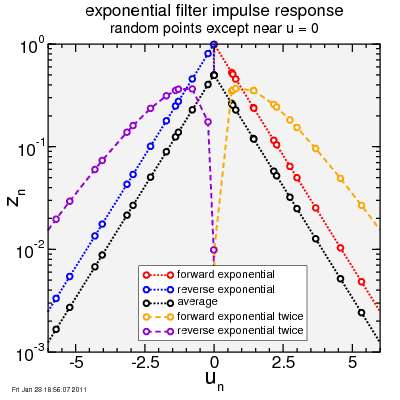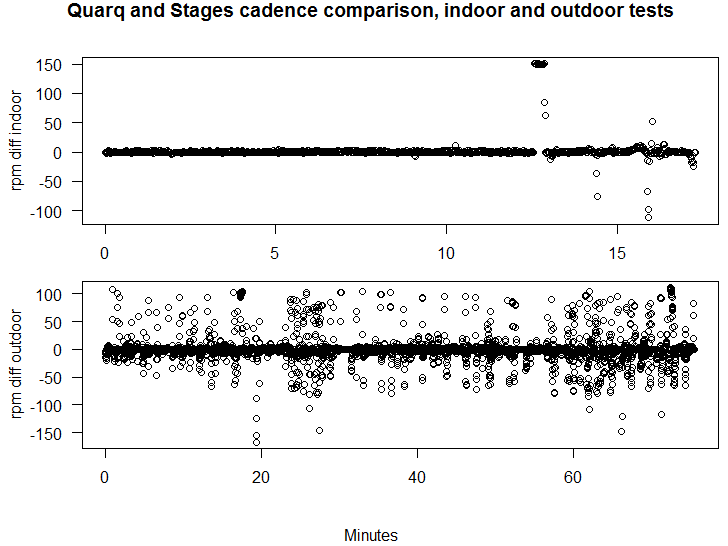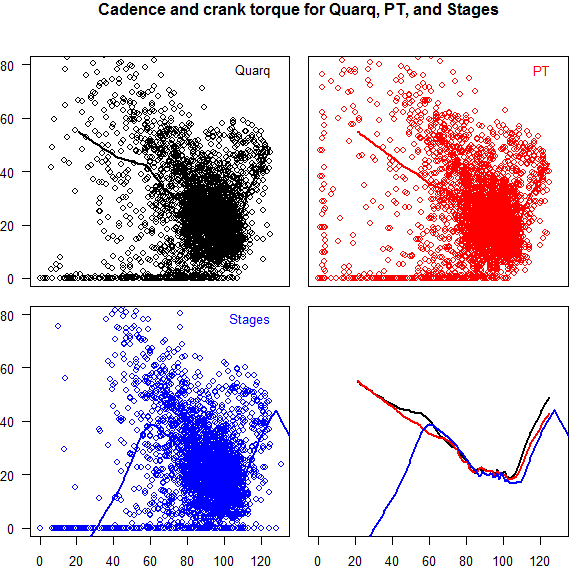New powermeter rumours
Moderator: robbosmans
I think guys did a fantastic job with the analysis. Incredible work, actually. I just would have held off publishing until we could confirm the abnormalities on sample size larger than 1. Ray did a great job explaining that his results are from an n=1 study, but frankly the Internet doesn't actually pay attention to logical explanations like that... it just works itself into a frenzy. As it has.
VeloNews Magazine/VeloNews.com tech

Visit starbike.com Online Retailer for HighEnd cycling components
Great Prices ✓ Broad Selection ✓ Worldwide Delivery ✓
www.starbike.com
If he applied an N >> 1 standard to every product he reviewed he wouldn't review any products. As it was, it was an amazing job he did.
rchung wrote:another is to do a robust smooth (like an odd-span median smooth) over the data before doing something like a kernel smooth.
I like exponential smoothing forward and backward then averaging the two, but you need to make sure you do it right or else you get interpolation anomalies.
Bad documentation here.
It produces a nice smooth symmetric impulse response even with randomly spaced data:

So it's robust against drops.
djconnel wrote:rchung wrote:another is to do a robust smooth (like an odd-span median smooth) over the data before doing something like a kernel smooth.
I like exponential smoothing forward and backward then averaging the two, but you need to make sure you do it right or else you get interpolation anomalies.
Yeah, almost any kernel that doesn't have a sharp cut-off works moderately well, though I have't done an exhaustive test of alternatives.
VNTech wrote:We only apply it to negative reviews, giving the manufacturer a chance to redeem themselves. Perhaps we are too kind
If you get a chance, here are two things we did. First, cadence indoors and out:

Second, for the outdoor ride, a comparison of rpm and crank torque. RPM is on the x-axis, crank torque (in Nm) on the y-axis.

-
JackDaniels
- Posts: 110
- Joined: Tue Oct 04, 2011 5:15 am
djconnel wrote:So it's robust against drops.
Interesting. I notice your blog mentions writing firmware for Garmin. Is this hypothetical, or have you actually written firmware for Garmin?
@prendrefeu
I'm afraid the Elsa may even be a little bit heavier than you calculated. The NDS arm you pointed to in the other thread is a Red version. The spindle is no long enough to work with the Elsa. Check out pictures of the Elsa on Quarq's site, or look a current SRAM Quarq BB30. The spindle extends well beyond the DS bearings and is covered by a spacer. The Red crank does not use such a spacer.
I was very excited when I heard there was a new Quarq model with "hollow" crank arms. I was hoping for magical weights similar to what people are posting in the "New Red crank info, must read" thread.
I'm afraid the Elsa may even be a little bit heavier than you calculated. The NDS arm you pointed to in the other thread is a Red version. The spindle is no long enough to work with the Elsa. Check out pictures of the Elsa on Quarq's site, or look a current SRAM Quarq BB30. The spindle extends well beyond the DS bearings and is covered by a spacer. The Red crank does not use such a spacer.
I was very excited when I heard there was a new Quarq model with "hollow" crank arms. I was hoping for magical weights similar to what people are posting in the "New Red crank info, must read" thread.
- prendrefeu
- Posts: 8580
- Joined: Wed Oct 31, 2007 10:32 pm
- Location: Glendale / Los Angeles, California
- Contact:
Me too, OwenN, me too. 
SRMs are still very light. The Specialized (re: Lightning) SRM might be the lightest, along with the SRM SiSL.
I need to do some digging to see what weights have been coming up for Power2Max spiders.
SRMs are still very light. The Specialized (re: Lightning) SRM might be the lightest, along with the SRM SiSL.
I need to do some digging to see what weights have been coming up for Power2Max spiders.
Exp001 || Other projects in the works.
prendrefeu wrote:I need to do some digging to see what weights have been coming up for Power2Max spiders.
See all my bike h e r e
-
petromyzon
- Posts: 781
- Joined: Mon Apr 05, 2010 4:14 pm
It seems that you need fairly meaty spider construction to have a consistent calibration and be robust against ring changes, at least for Quarq and Power2Max technology. I know this is WW, but I think I'd rather just a bit more reassurance that the data is solid.
- prendrefeu
- Posts: 8580
- Joined: Wed Oct 31, 2007 10:32 pm
- Location: Glendale / Los Angeles, California
- Contact:
Thanks Tillquist! 
Exp001 || Other projects in the works.
rchung wrote:Yeah, almost any kernel that doesn't have a sharp cut-off works moderately well, though I have't done an exhaustive test of alternatives.
I have. The key thing is how many continuous derivatives your kernel has. If the kernel itself is discontinuous, it works poorly. The standard smoothing used in Training Peaks is discontinuous (flat, then zero). A truncated Gaussian is also discontinuous, but the discontinuity can be quite small. Smooth to two derivatives is cosine-squared evaluated between -π/2 and π/2. This works quite well, but becomes time-consuming for large smoothing distances. The 2-sided exponential is smooth to 0-order, but is first-order discontinuous. It's smoother than the flat kernel, but not as good as the cosine-squared kernel. But it's very efficient to calculate.
The key in the convolution of whatever kernel is to not assume constant values between points, but rather assume linear variation between points. This improves the high-frequency rejection and reduces sensitivity to sampling. This is what I did with the exponential smoothing I described. So you want your kernel when multiplied by a linear interpolation function to be analytically integrable, if possible. With exponents and exponential-like functions, including cosine-squared, this is generally possible.

Visit starbike.com Online Retailer for HighEnd cycling components
Great Prices ✓ Broad Selection ✓ Worldwide Delivery ✓
www.starbike.com






